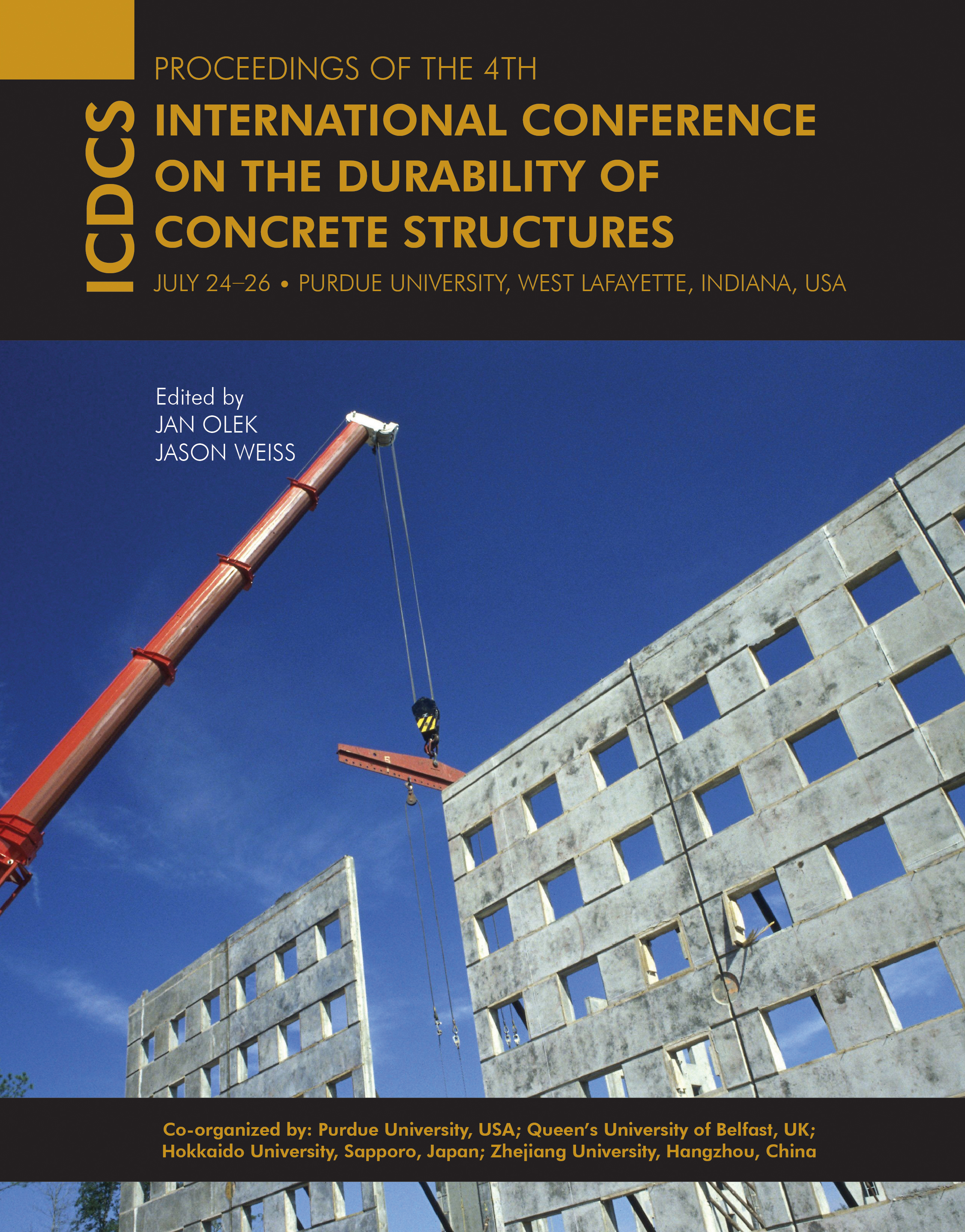Abstract
The designed service life of Hong Kong-Zhuhai-Macao Bridge is 120 years. Concrete quality control for the submerged tunnel of the project is an important work to assure the designed service life. This article is to present an advanced concrete performance prediction method based on water–binder ratio (w/b) monitoring, which is used to serve for concrete quality control. During experiments in the lab, the w/b of submerged tunnel concrete mix proportion was designed to fluctuate up and down, while the other compositions were kept constant. Concretes with different w/b were prepared. The w/b of fresh concrete was tested, followed by preparation of specimens for compressive strength and chloride diffusion coefficient tests. The compressive strength and chloride diffusion coefficient of the hardened concrete were tested. Relationships between the tested w/b and the compressive strength and chloride diffusion coefficient were established. The fitting curves were taken as the prediction models. During construction of submerged tunnel in field, w/b of fresh concrete was tested. The compressive strength and chloride diffusion coefficient of the concrete were calculated using the established models. In addition, specimens of the tested concrete were prepared and cured for compressive strength and chloride diffusion coefficient tests. Finally, the predicted results and the tested results were analyzed, and the predicted deviation was calculated. Results of the calculations show that the prediction deviations of compressive strength and chloride diffusion coefficient are
Date of Version
July 2014
DOI
10.5703/1288284315426
Recommended Citation
Zeng, Junjie; Wang, Shengnian; Lv, Weiqing; Su, Quanke; and Shui, Zhonghe, "Water–Binder Ratio Monitoring as a Quality Control Tool for the High-Performance Concrete Used in the Construction of the Submerged Tunnel" (2014). International Conference on Durability of Concrete Structures. 8.
https://docs.lib.purdue.edu/icdcs/2014/structuralperformance/8
Included in
Water–Binder Ratio Monitoring as a Quality Control Tool for the High-Performance Concrete Used in the Construction of the Submerged Tunnel
The designed service life of Hong Kong-Zhuhai-Macao Bridge is 120 years. Concrete quality control for the submerged tunnel of the project is an important work to assure the designed service life. This article is to present an advanced concrete performance prediction method based on water–binder ratio (w/b) monitoring, which is used to serve for concrete quality control. During experiments in the lab, the w/b of submerged tunnel concrete mix proportion was designed to fluctuate up and down, while the other compositions were kept constant. Concretes with different w/b were prepared. The w/b of fresh concrete was tested, followed by preparation of specimens for compressive strength and chloride diffusion coefficient tests. The compressive strength and chloride diffusion coefficient of the hardened concrete were tested. Relationships between the tested w/b and the compressive strength and chloride diffusion coefficient were established. The fitting curves were taken as the prediction models. During construction of submerged tunnel in field, w/b of fresh concrete was tested. The compressive strength and chloride diffusion coefficient of the concrete were calculated using the established models. In addition, specimens of the tested concrete were prepared and cured for compressive strength and chloride diffusion coefficient tests. Finally, the predicted results and the tested results were analyzed, and the predicted deviation was calculated. Results of the calculations show that the prediction deviations of compressive strength and chloride diffusion coefficient are





